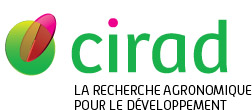Drouin Alex, Balenghien Thomas, Durand Benoit, Aranda Carles, Bennouna Amal, Bouattour Ali, Boubidi Saïd-Chaouki, Conte Ann Amaria, Delacour Sarah, Goffredo Maria, Himmi Oumnia, L'Ambert Grégory, Schaffner Francis, Chevalier Véronique. 2025. Modelling the population dynamics of Rift Valley fever virus mosquito vectors in the western Mediterranean Basin. Ecological Modelling, 502:111013, 14 p.
|
Version publiée
- Anglais
Sous licence  . .
2025_Drouin_EcolModelling_ModellingPopulationDynamicsRiftValleyFeverVirusMosquitoVectorsWesternMediterraneanBasin.pdf Télécharger (6MB) | Prévisualisation |
Url - autres données associées : https://github.com/drouinalex/spatial_modelling_rvf_vectors
Liste HCERES des revues (en SHS) : oui
Thème(s) HCERES des revues (en SHS) : Economie-gestion
Résumé : Rift Valley fever (RVF) is a zoonotic vector-borne disease mainly transmitted by mosquitoes, and present in Africa, the Arabian Peninsula, and the Indian Ocean. The endemic situation in Mauritania, and the recent outbreaks in Libya have raised concerns about the potential spread of the virus in the western Mediterranean Basin, where competent mosquitoes are present. However, given the large diversity of climates and landscapes in this region, the areas and periods at risk of RVF virus (RVFV) transmission remain unknown. Vector abundance is one of the drivers of arboviruses transmission, therefore knowledge on mosquito species distributions and population dynamics is needed to implement surveillance and to assess the risk of RVFV circulation. Here, we adapted a published modelling framework of mosquito population dynamics to five potential RVFV vectors in the western Mediterranean Basin (Aedes caspius, Aedes detritus, Aedes vexans, Culex pipiens and Culex theileri). The mechanistic model was designed with a daily time step and a 0.1° x 0.1° spatial resolution and takes temperature and precipitations data as inputs, along with published vector distribution maps. We used mosquito trapping data from Spain, France, Italy and Morocco to calibrate the model, and we produced monthly maps of abundance of the five vectors for the whole studied area. We then evaluated the model performances by assessing the correlation between field data and model predictions. Finally, we performed a sensitivity analysis to identify the main influential parameters. The model was able to reproduce most of the abundance peaks for the five mosquito species. Goodness-of-fit was high for Aedes species, especially for Ae. caspius, a highly competent mosquito for RVFV transmission, but lower for Culex species, with potential overpredictions in some regions. More knowledge is required about the presence and abundance of potential RVFV vectors in the Mediterranean Basin to improve predictions. However, this first model allows to identify seasons and areas with high vectors abundances that could be used in the future for surveillance of the disease.
Mots-clés Agrovoc : dynamique des populations, Virus de la fièvre de la vallée du Rift, vecteur de maladie, surveillance épidémiologique, fièvre de la Vallée du Rift, Culex theileri, Aedes vexans, Culex pipiens, épidémiologie, modèle de simulation, évaluation du risque, distribution géographique, Culex
Mots-clés géographiques Agrovoc : France, Maroc
Mots-clés libres : Rift Valley fever, Population dynamics, Modelling, Mediterranean basin, Mosquitoes
Auteurs et affiliations
- Drouin Alex, CIRAD-BIOS-UMR ASTRE (FRA)
-
Balenghien Thomas, CIRAD-BIOS-UMR ASTRE (FRA)
 ORCID: 0009-0008-4495-4814
ORCID: 0009-0008-4495-4814
- Durand Benoit, ANSES (FRA)
- Aranda Carles, CReSA (ESP)
- Bennouna Amal, Institut Pasteur (FRA)
- Bouattour Ali, Institut Pasteur de Tunis (TUN)
- Boubidi Saïd-Chaouki, Institut Pasteur d'Algérie (DZA)
- Conte Ann Amaria, IZSA&M (ITA)
- Delacour Sarah, University of Zaragoza (ESP)
- Goffredo Maria, IZSA&M (ITA)
- Himmi Oumnia, Mohammed VI University of Health Sciences (MAR)
- L'Ambert Grégory, EID (FRA)
- Schaffner Francis
- Chevalier Véronique, CIRAD-BIOS-UMR ASTRE (MDG) - auteur correspondant
Source : Cirad-Agritrop (https://agritrop.cirad.fr/612297/)
[ Page générée et mise en cache le 2025-09-14 ]




